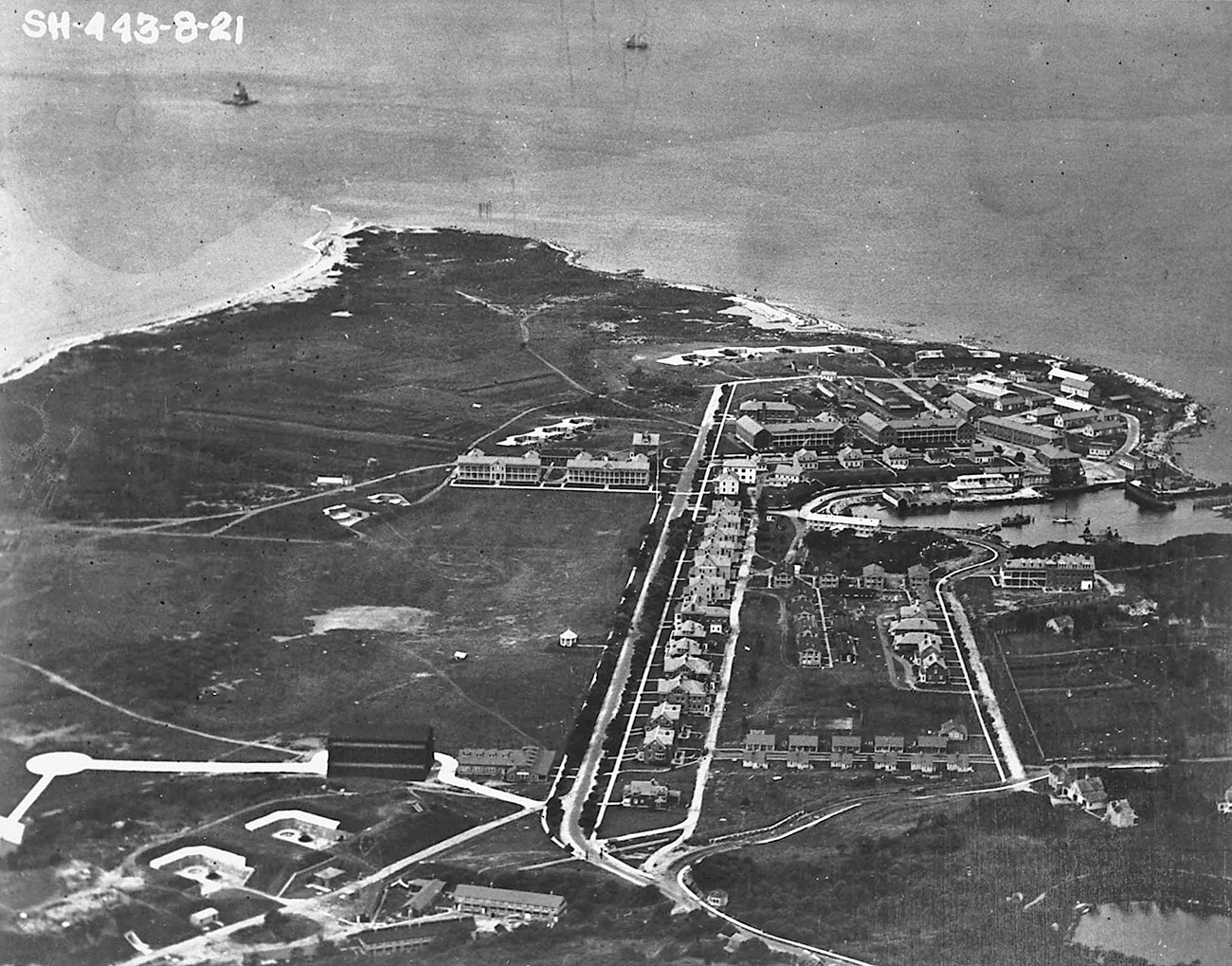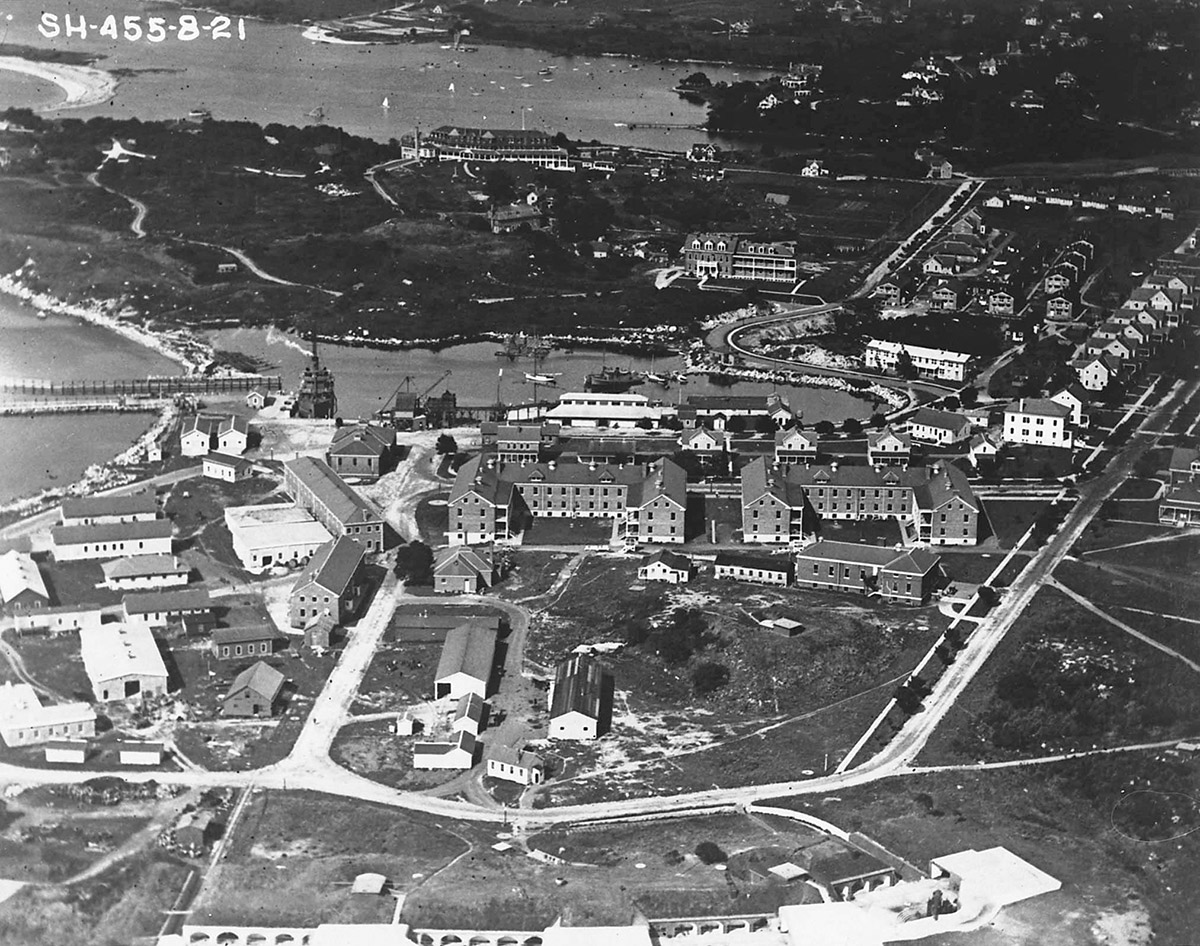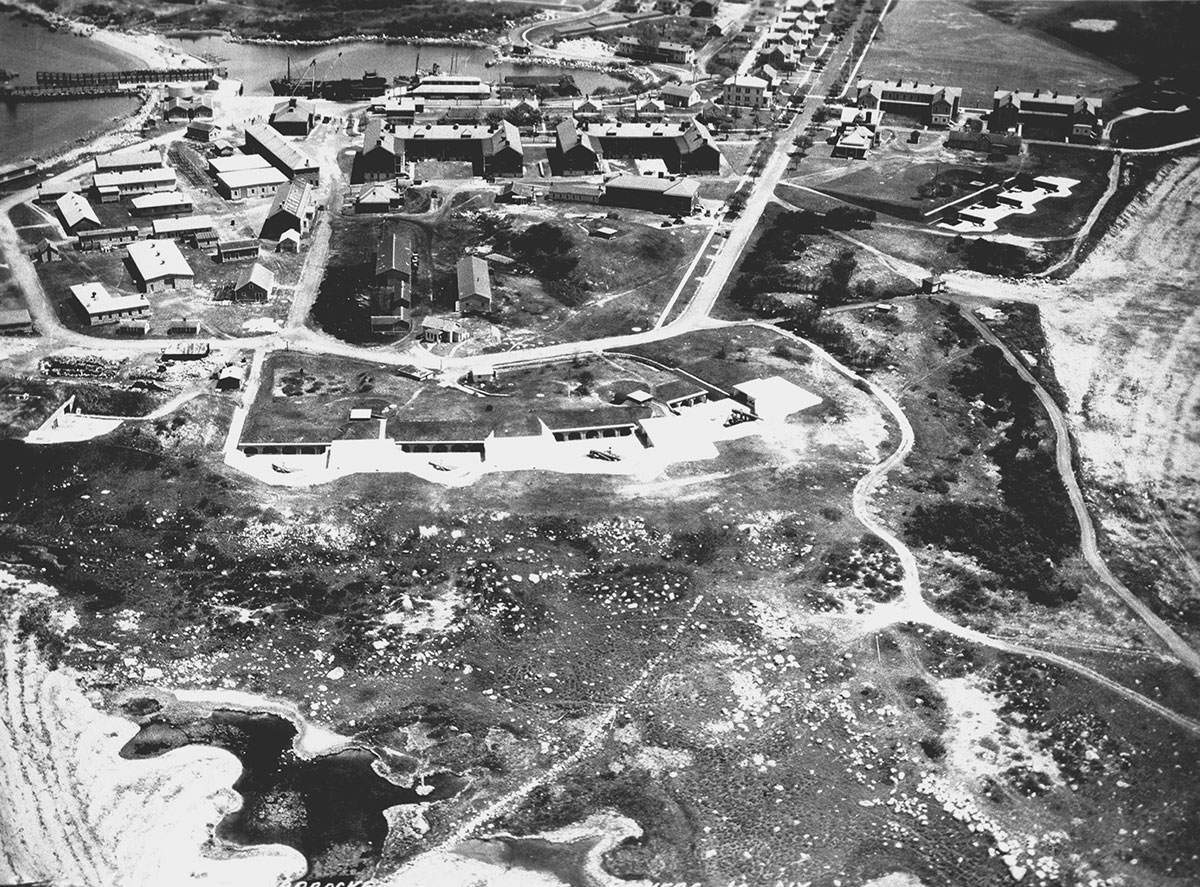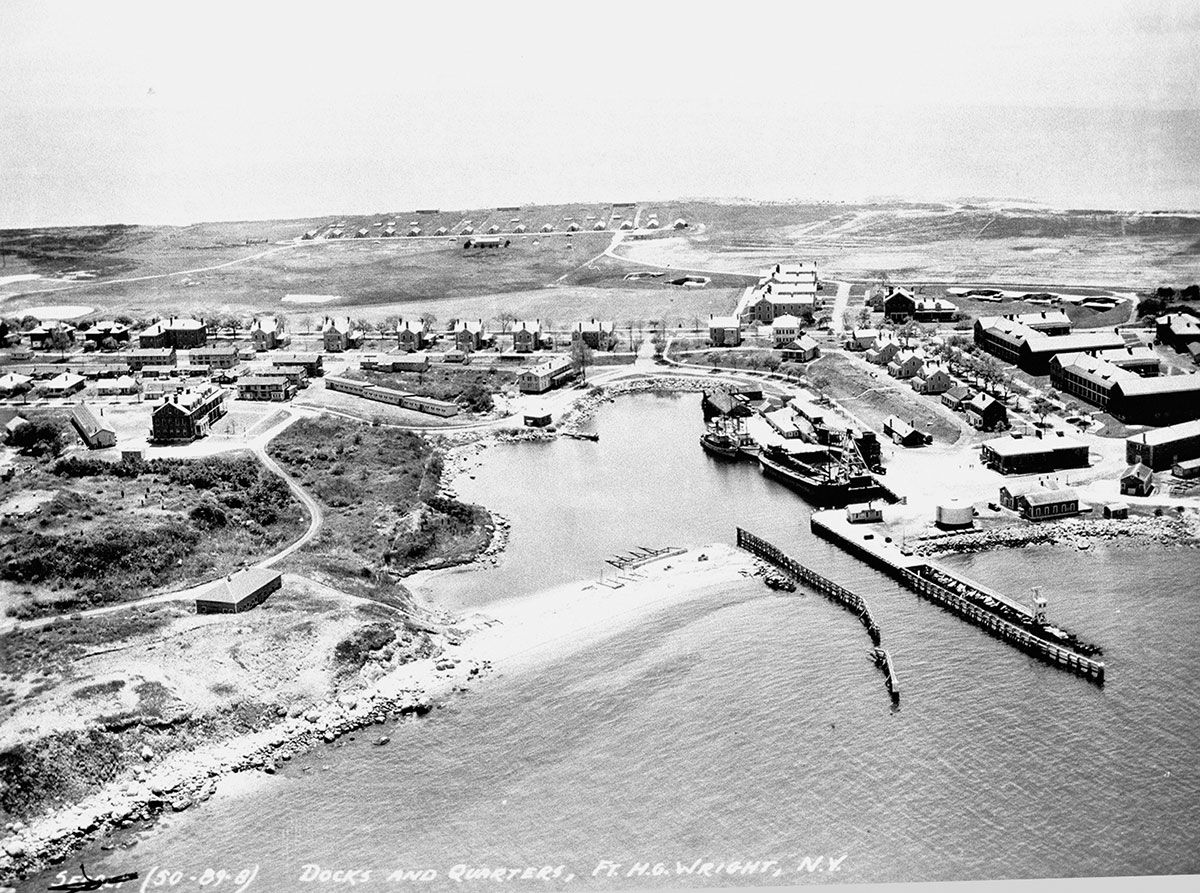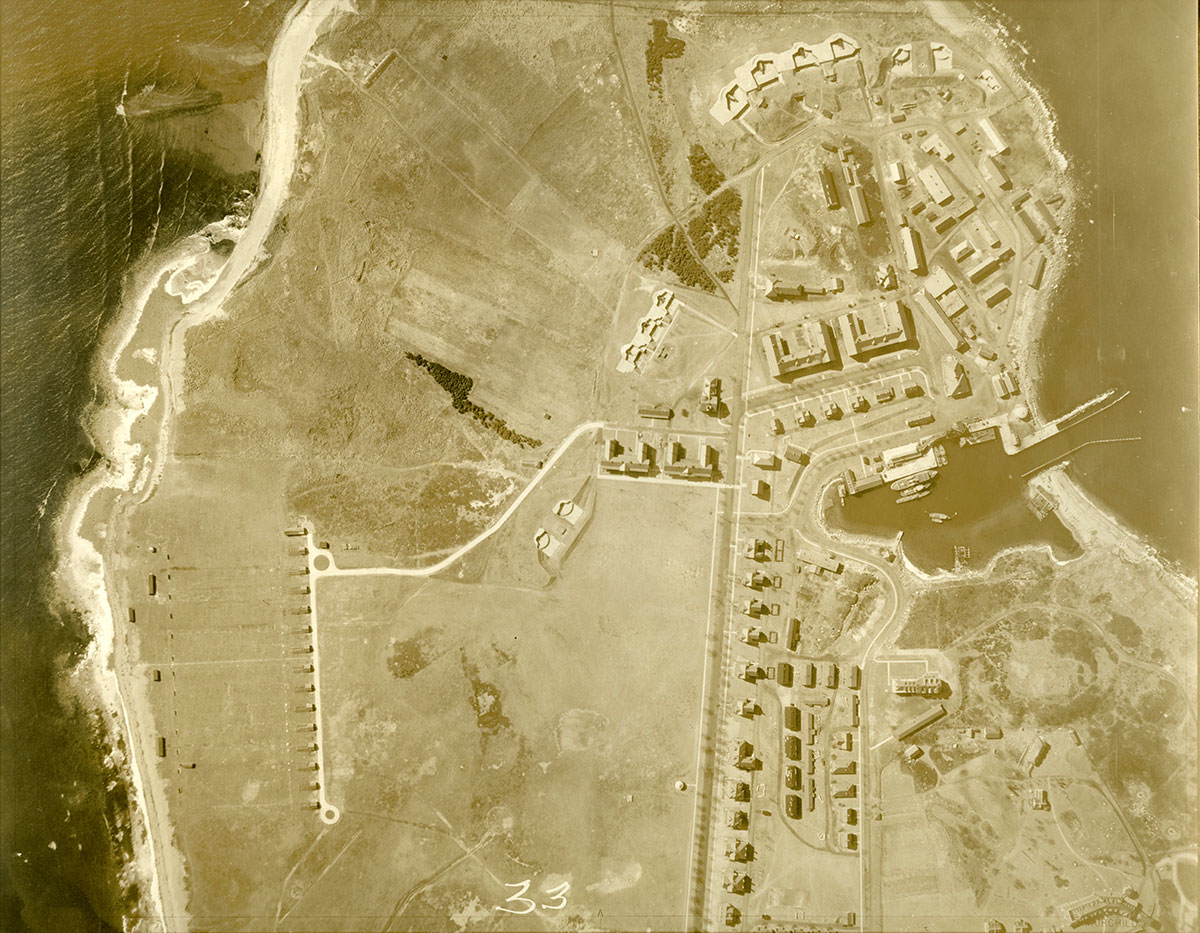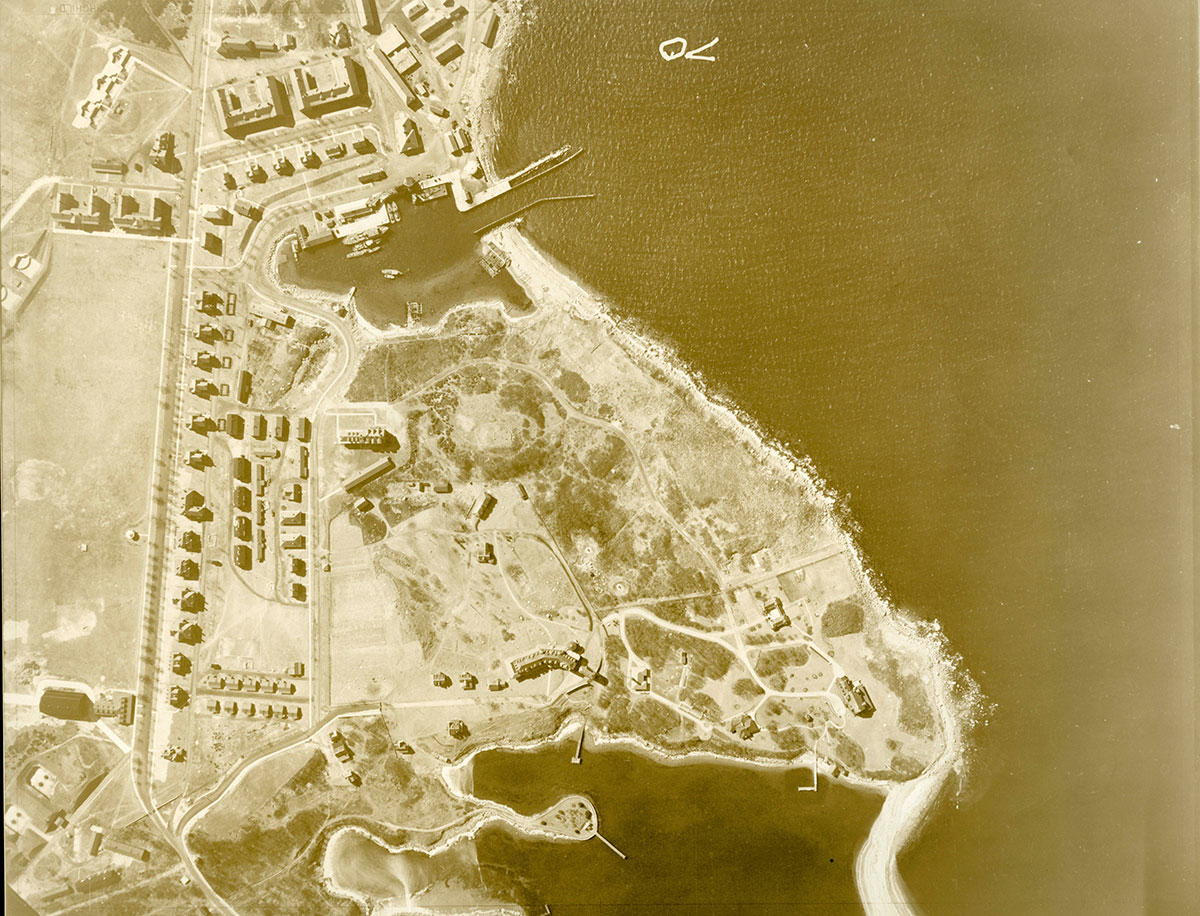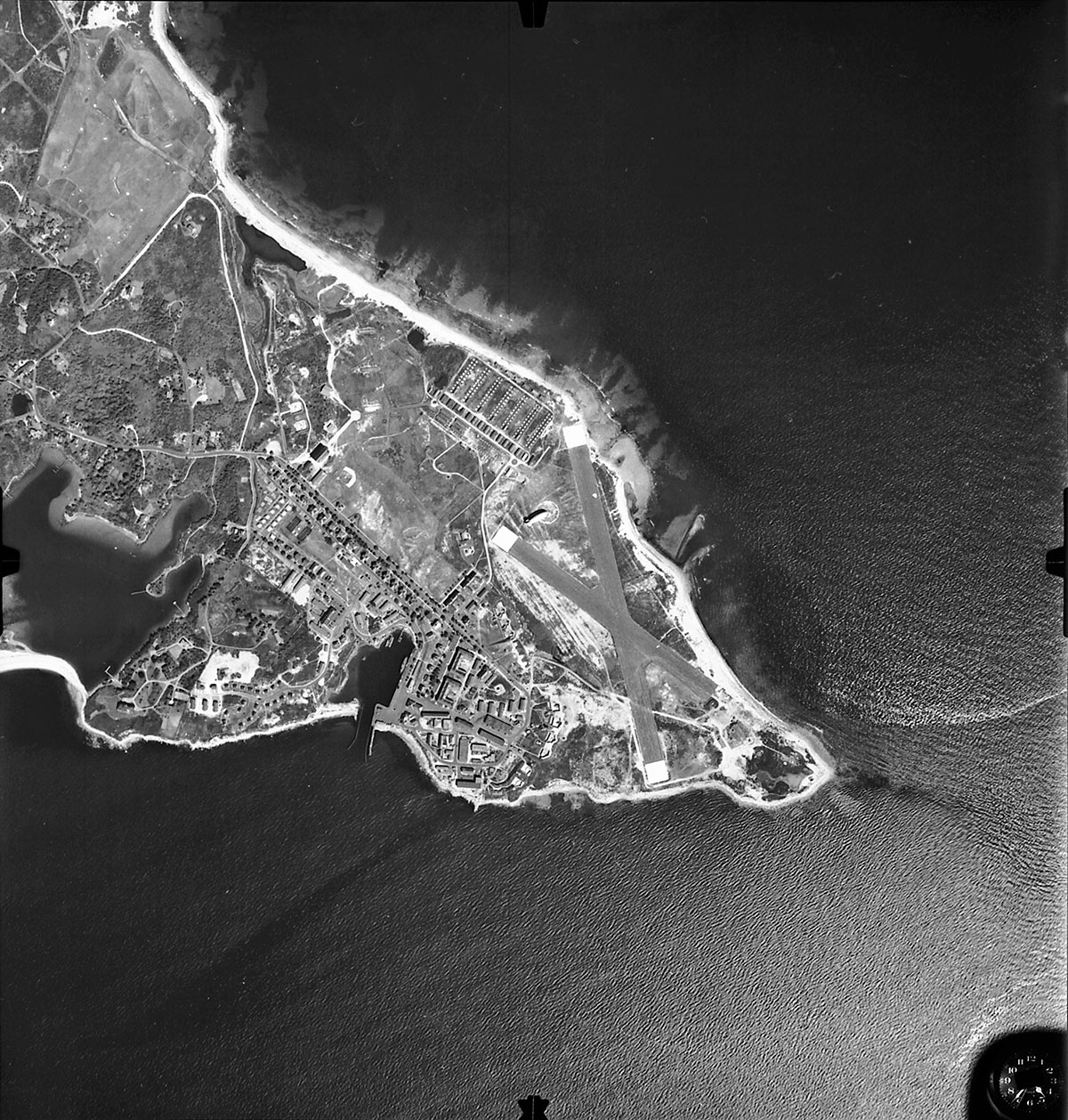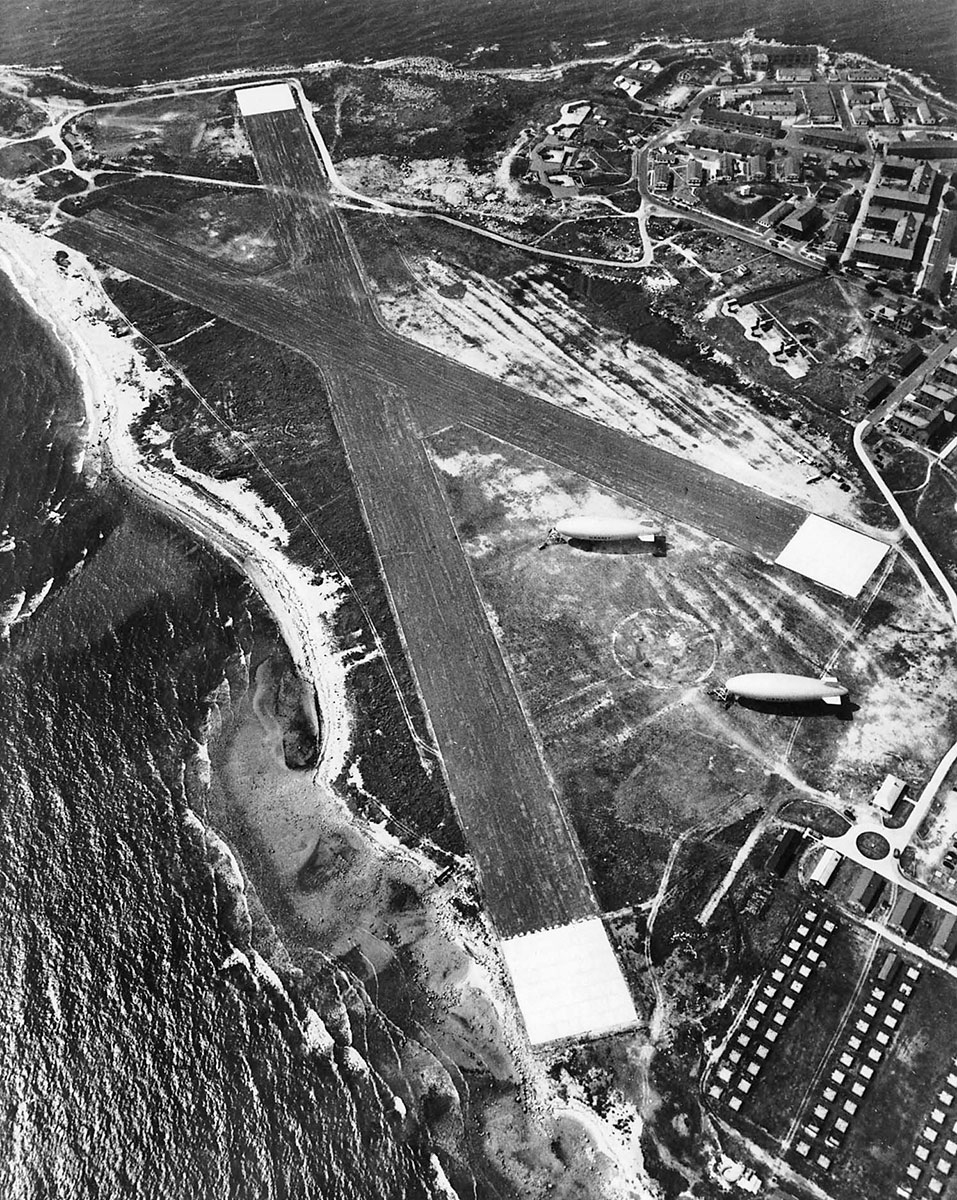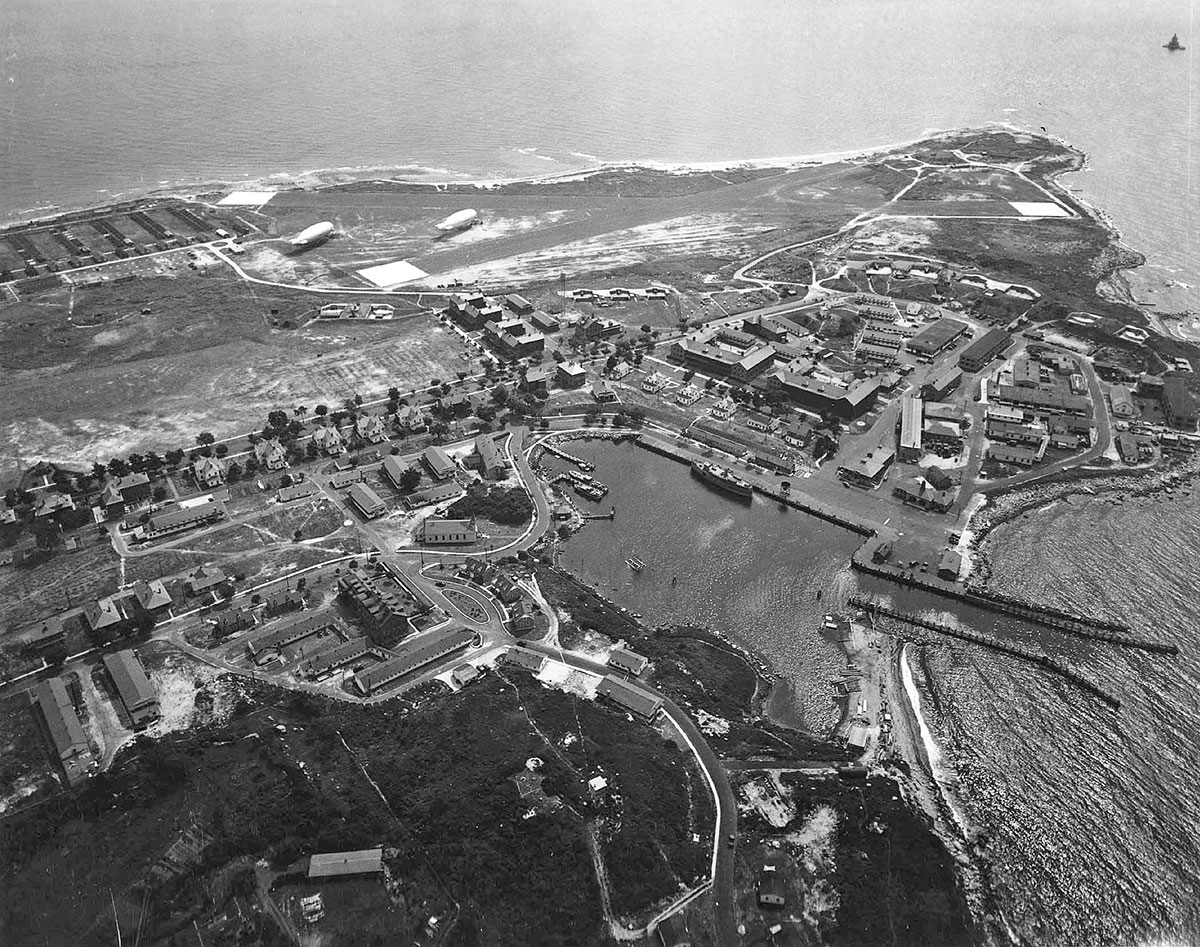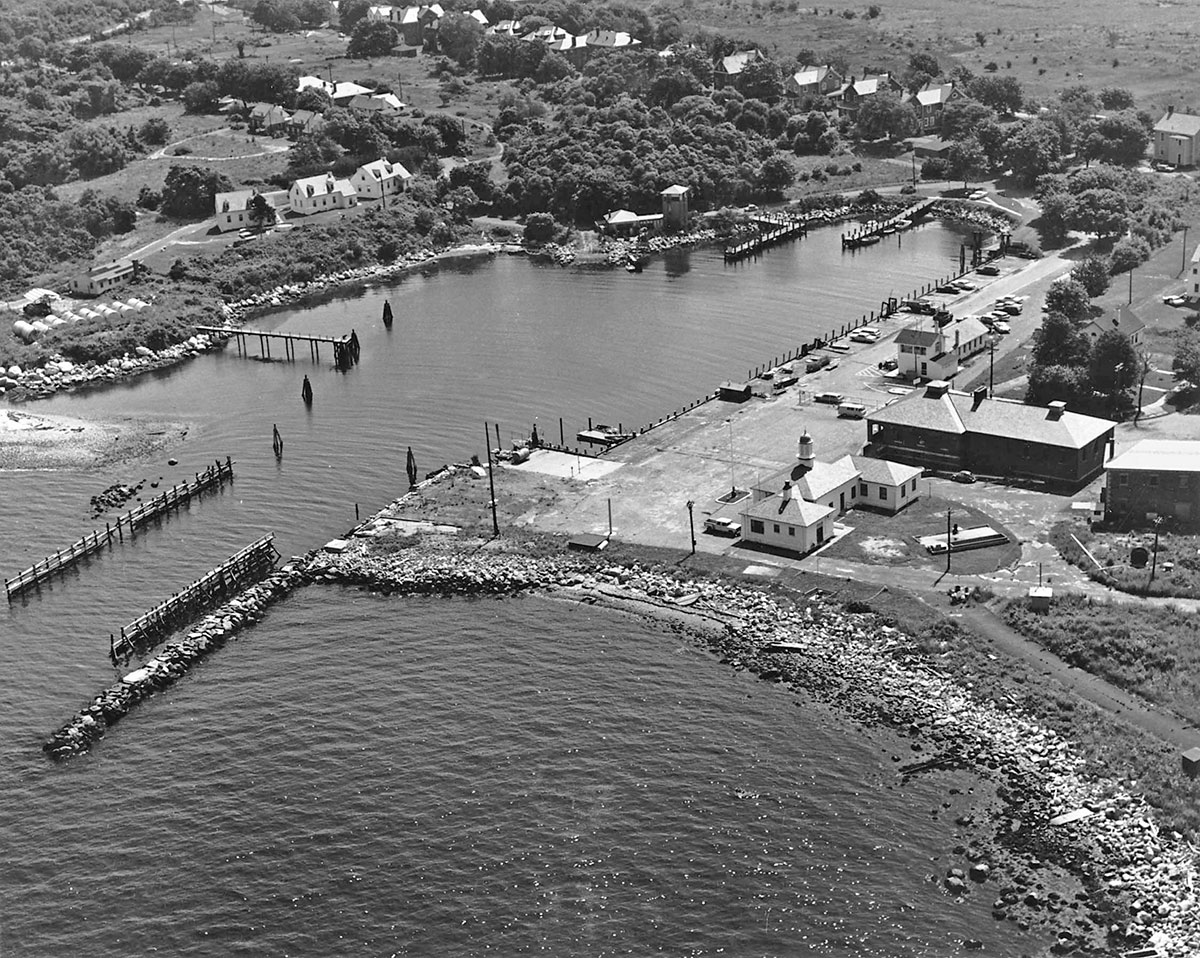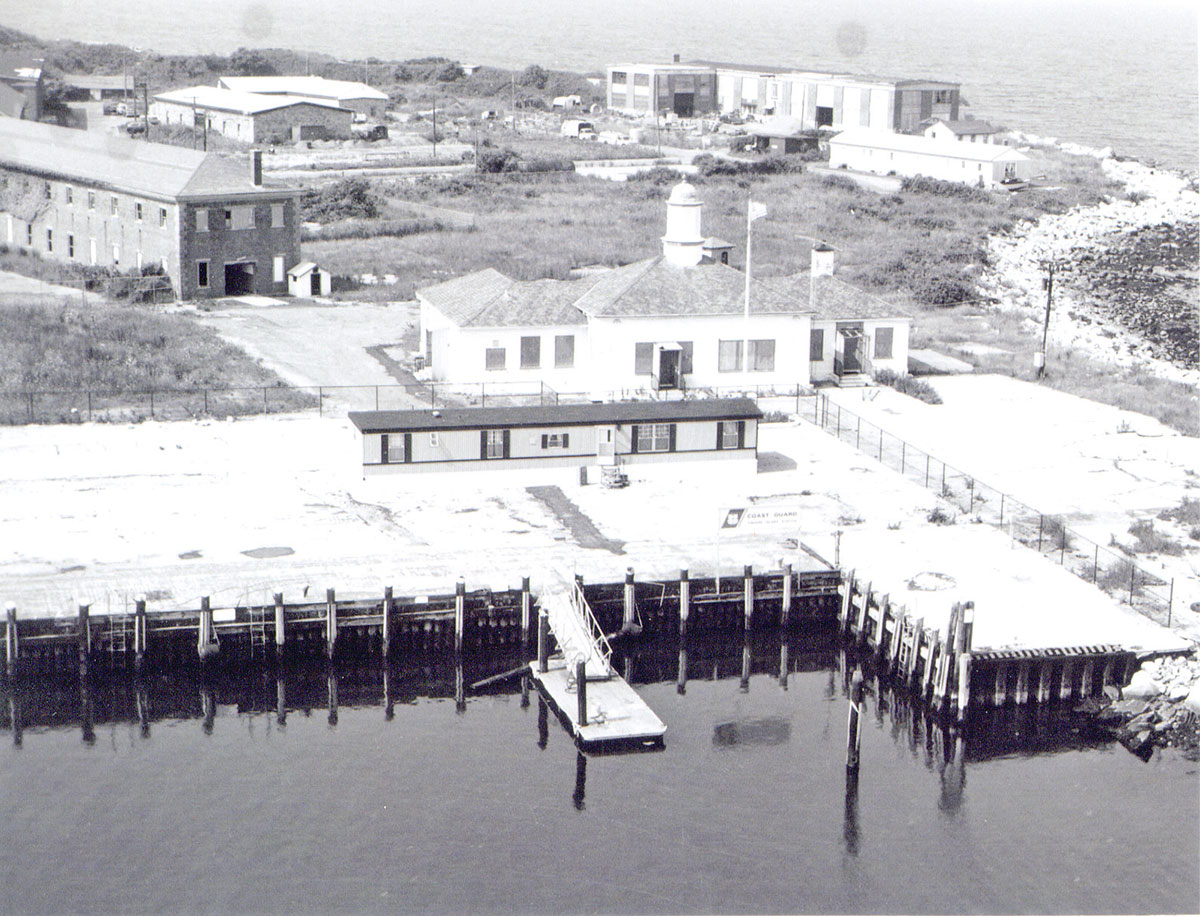Aerials of Fort H.G. Wright
- Aerial of Fort H.G. Wright and the western tip of Fishers Island, August 9, 1921. Photographed from 1000 feet. Featured are the two mortar pits in left foreground, the Balloon Hangar, Officers Row, Silver Eel Cove, various barracks and gun emplacements. Race Point is in background with Race Rock Light at left beyond. Courtesy of National Records Administration (NARA). Museum Collection.
- Aerial of Fort H.G. Wright featuring buildings and barracks near Silver Eel Cove, August 9, 1921. Photographed from an altitude of 600 feet. Featured are the 10- and 12-inch gun emplacements in foreground (partially cut off), barracks (on current site of school), various warehouses and military buildings, the post hospital, parts of Officers Row, Silver Eel Cove, and the Mononotto Inn with Hay Harbor beyond. Courtesy of NARA. Museum Collection.
- Aerial view of Fort H.G Wright featuring the 10-inch and 12-inch disappearing gun emplacements that fronted the Race and guarded the eastern entrance to Long Island Sound, circa 1920s. Source NARA, courtesy of Mark Berhow.
- Aerial looking south past fort structures surrounding Silver Eel Cove toward National Guard area, circa 1924. Source NARA, courtesy of Mark Berhow.
- Aerial of Fort H.G. Wright featuring Silver Eel Cove area, dispersed gun emplacements, Officers Row, barracks and the National Guard camp at left, circa 1924. Museum Collection.
- Aerial that encompasses both sides of Silver Eel cove, including land stretching out to the neighboring Salvage house (right foreground) and the Mononotto Inn (center foreground). The full sweep of Officers Row is also revealed. Circa 1924. Museum Collection.
- Aerial of Fort H.G. Wright looking down at main reservation, January 18, 1934. The photo was taken from an altitude of 8,000 feet from a dirigible. Courtesy of NARA. Museum Collection.
- Aerial of National Guard camp, south of the Parade Grounds, Fort H.G. Wright, N.Y., 245th Coast Artillery in residence. Courtesy of Daily News, July 14, 1934.
- “Fort H.G. Wright Landing Field, Fishers Island, N.Y.,” September 20, 1934. Note that the Fort’s gun emplacements have been blotted out for security purposes. Source NARA, courtesy of Mark Berhow.
- High aerial over the western tip of fishers Island, including Elizabeth Field airport and the main reservation of Fort H.G. Wright, June 15, 1944. Courtesy of NARA. Museum Collection.
- Aerial of Elizabeth Field airport, Fort H.G. Wright, August 21, 1944. By the early 1940s, the modernization of Elizabeth Field was considered of vital importance to the coast defenses of the region. In 1941, two 2,800-foot runways were built to enable larger military aircraft to land. The two airships were part of a Navy airship detachment stationed at Elizabeth Field in 1944 and 1945 at the end of World War II. Courtesy of NARA. Museum Collection.
- Aerial view looking south by southwest over Fort H.G. Wright’s main reservation, August 21, 1944. The photograph was taken from an altitude of 1000 feet. It provides a clear view of the Fort’s extensive facilities, barracks and buildings during the World War II era. Courtesy of NARA. Museum Collection.
- Aerial of Silver Eel Cove, circa 1960s. Note the former Fort Wright Guard House adjacent to the Coast Guard Station, later Ferry Annex, today’s Lighthouse Works building. US Coast Guard Photo. Museum Collection.
- Aerial featuring former Guard House and US Coast Guard Building at Silver Eel Cove. The Guard House was razed in 1975. US Coast Guard photo, circa 1960s. Museum Collection.
- Aerial of Silver Eel Cove showing three former fort buildings that have been or are being repurposed: the freight building (2nd fl. affordable housing), the original fort firehouse/USCG Station/Ferry Annex (artist work and gallery space) and the Ordnance Building (future use as yet undeclared). More than 70 years after the fort was shuttered, a revitalized gateway to Fishers Island is being created utilizing its structures. US Coast Guard Photo, circa 1978. Museum Collection.

